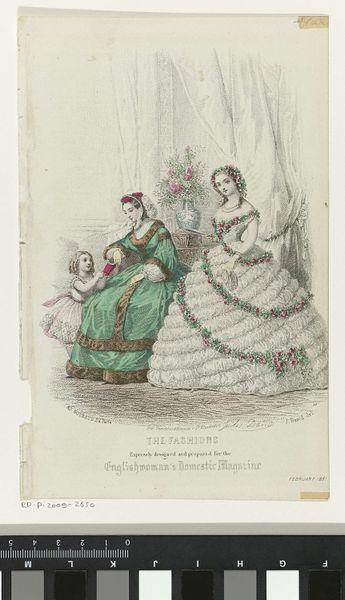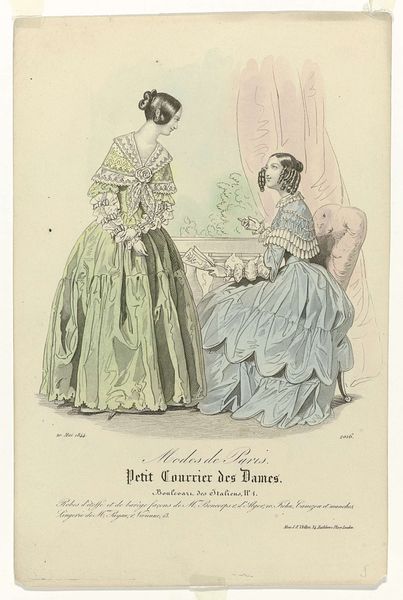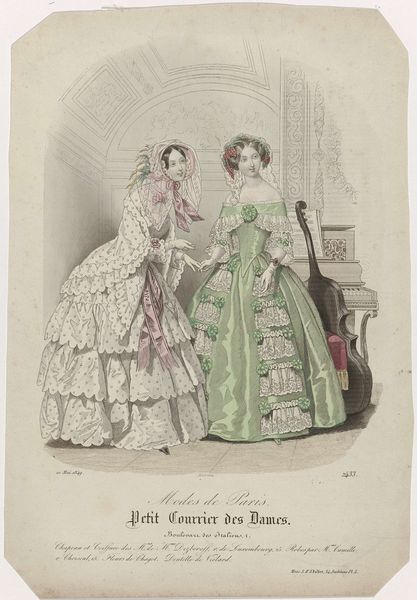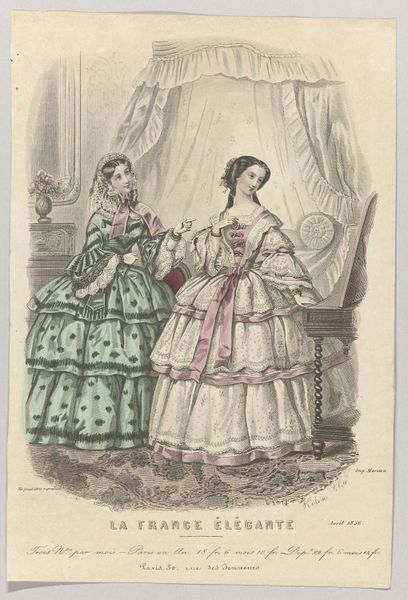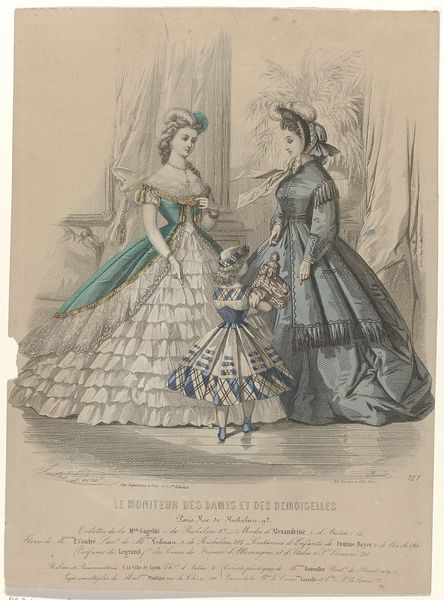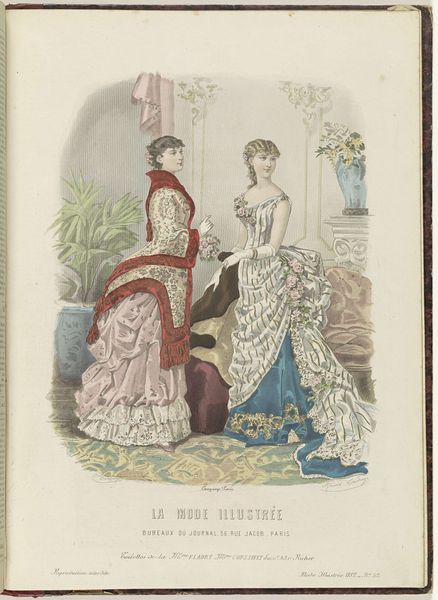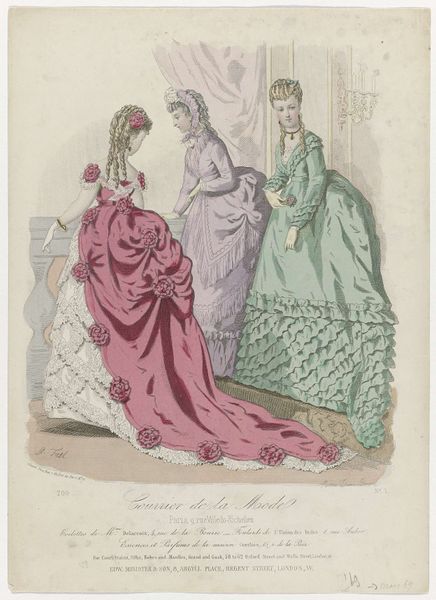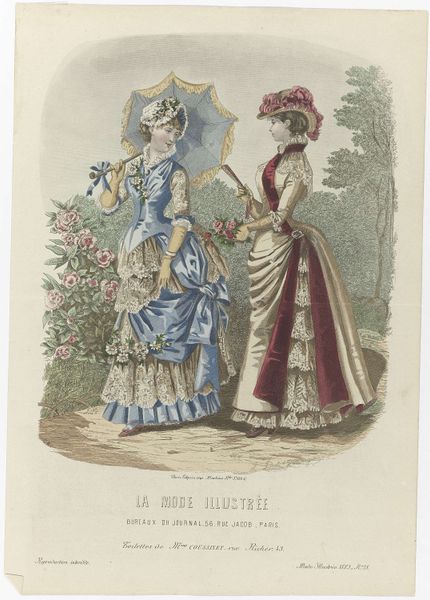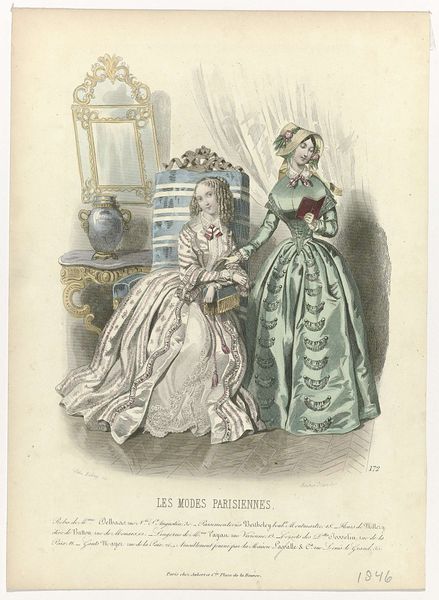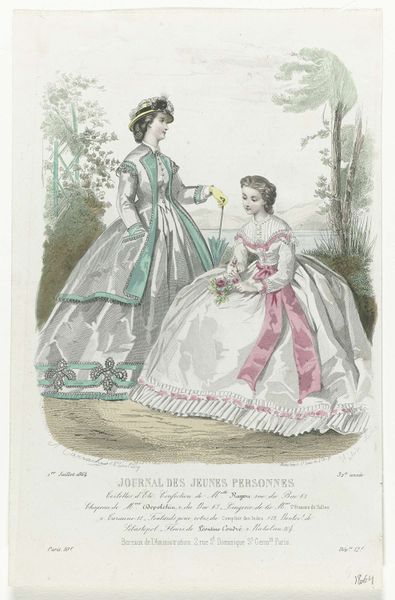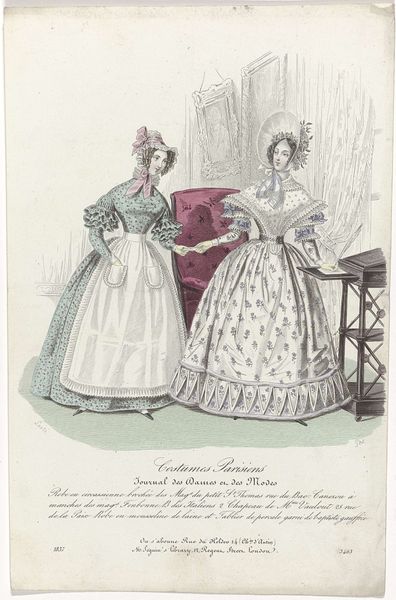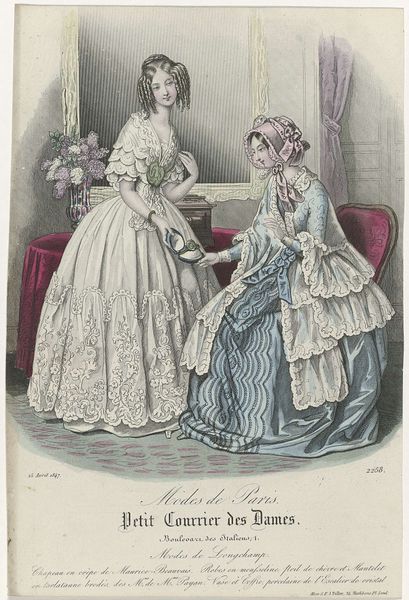
Les Modes Parisiennes, 1871-1872, Pl. 1554 : Toilette de la M.on Gagelin (...) 1871 - 1872
0:00
0:00
Dimensions: height 278 mm, width 210 mm
Copyright: Rijks Museum: Open Domain
Curator: Look at this exquisite period piece: *Les Modes Parisiennes, 1871-1872*. It's a print, rendered in watercolor, showcasing Parisian fashion of the time. Editor: My first thought? Such frilliness! Like a confectionary explosion of lace and bows. It almost feels… suffocatingly decorative. Curator: These fashion plates were extremely popular, appearing in magazines of the time to showcase the latest styles and fabrics. Think of them as the Instagram feeds of the 19th century. Editor: So, an aspirational, curated reality. It’s interesting to consider what these images leave out. Who gets to participate in this display of opulence? What labor produces these immaculate gowns? Curator: Precisely! What we see is the ultimate refinement – dresses by Gagelin, foulards from la Malle. There’s a lightness, a fantasy element in the Rococo-esque details… a stark contrast with the Franco-Prussian War that just ended in 1871. The piece presents almost a whimsical desire for escapism in this specific historical moment, in a genre-painting style. Editor: Ah, yes, that tension is palpable. These women are staged as paragons of femininity in the face of national trauma and unrest, right after the Paris Commune. Do you think this commitment to representing only elite white women contributes to a sort of propaganda, too? Almost insisting on the continuation of tradition and an outdated, aristocratic aesthetic amid profound socio-political shifts? Curator: I do. However, let's give credit to the anonymous artist too; I find it stunning how, through the soft watercolour bleed, a certain feminine ideal has come to life. It has that certain ‘je ne sais quoi,’ capturing a moment. It's more than fashion; it’s capturing an atmosphere. Editor: Well, I remain skeptical. Despite their delicate charm, I find such pieces undeniably ideological. This piece offers us today important insight to cultural tension after a revolution. Curator: That’s a sharp note to end on – seeing beauty, while questioning its context. Thanks! Editor: My pleasure!
Comments
No comments
Be the first to comment and join the conversation on the ultimate creative platform.
